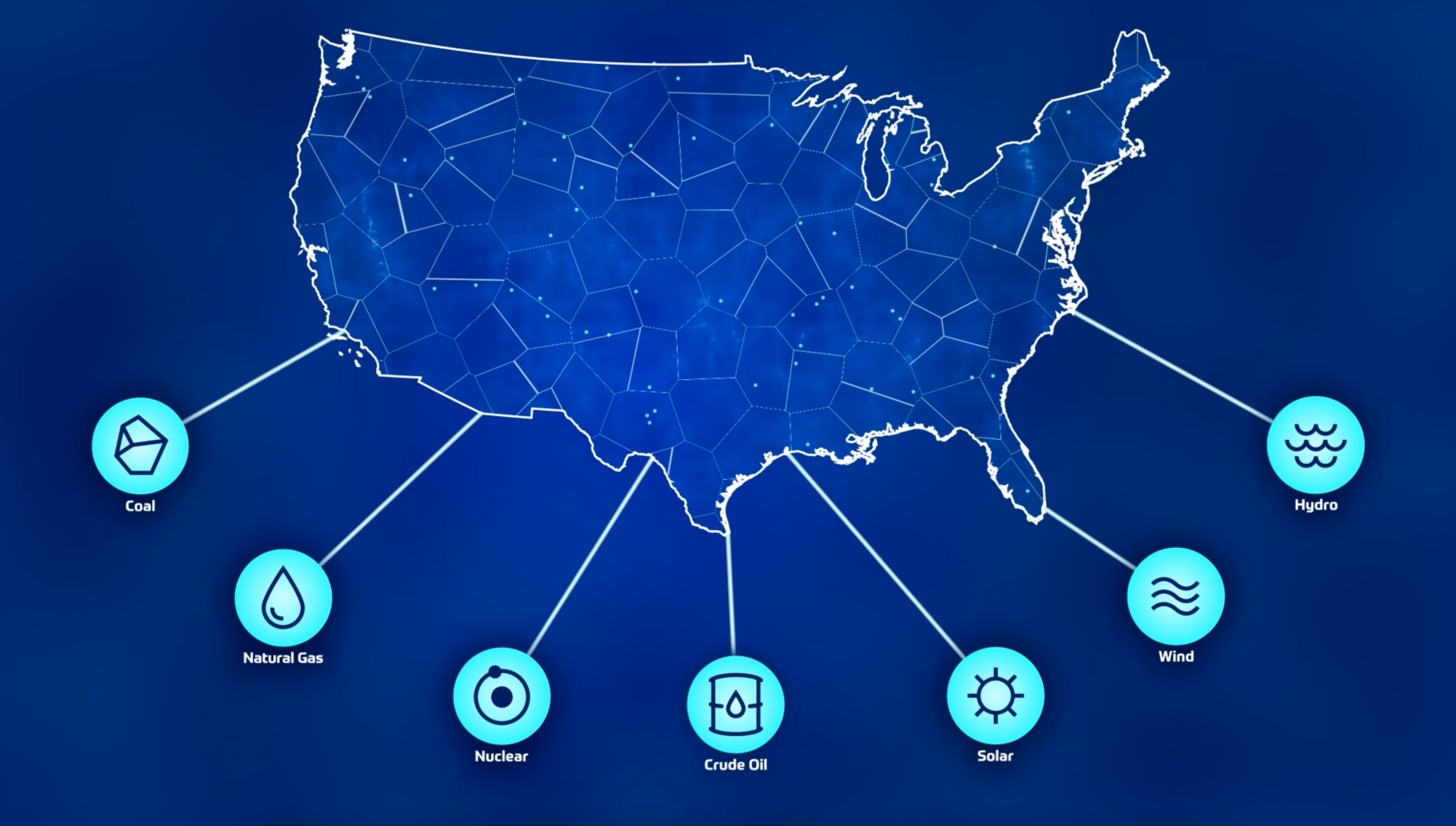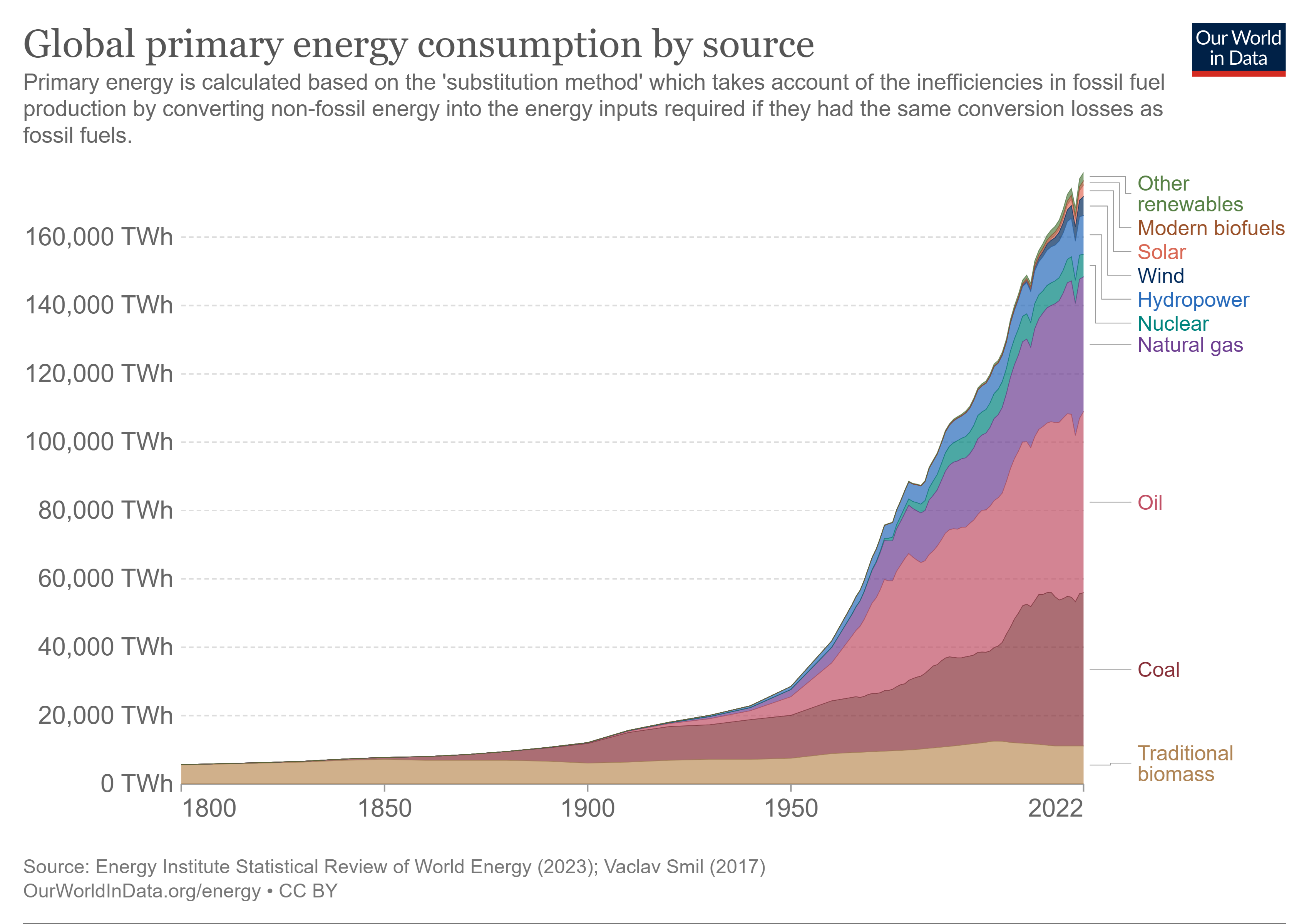
Throughout the Let’s Clear the Air campaign, you’ll see the term “energy addition.” Let’s talk about what the term means and why we’re using it.
The predominant energy and climate narratives emphasize transition — replacing fuel sources such as petroleum, coal, and natural gas with renewable sources like wind and solar. This transition is aimed at reducing greenhouse gas emissions.
The notion of replacing current energy sources overlooks a number of technical, logistical, and practical details, including history. The past few centuries show that how we produce energy has been in constant change. This has been driven by innovations ranging from oil lamps to steam engines, combustion engines, and electricity.
In 1800 and before, people burned biomass such as wood, agricultural byproducts, and dung for cooking and heating, while relying on muscles, wind, and water mills to grind grains. Transportation and other work was aided by horses or other animals. Some two billion people still live this way because they lack access to modern energy sources.
During the Industrial Revolution, coal became the leading fuel. As gasoline vehicles increased in number, petroleum surged to become the dominant energy source. Advances in oil extraction, such as fracking, led to an abundant supply of inexpensive cleaner-burning natural gas, which became the leading producer of electricity.
With each change in how people produce and use energy, the previous source remained in use. According to the 2023 Energy Institute Statistical Review of World Energy, in 2020 people consumed twice as much energy from biomass as they did in 1800.
Oil surpassed coal as the top energy fuel source in 1965. But just as coal didn’t end the use of biomass, oil didn’t end the use of coal. In fact, coal consumption nearly tripled from 1965 to 2022.
Similarly, while natural gas usage has grown more than 500% since 1965, other energy sources, including nuclear, hydropower, and renewables, as well as oil and coal, have also increased.
The reason for this is simple: energy supply and demand increase together.
Since the beginning of the industrial revolution, energy consumption has driven the massive growth of wealth, prosperity, health, and human longevity. The World Health Organization says that energy and health are “inextricably linked,” and that “…energy is also critical for achieving almost all other global goals…” Those goals include addressing poverty, education, gender equality, clean water, job security and economic growth.
The transition described in the predominant energy and climate narratives has an array of technical challenges, which we’ll discuss in future posts. Those may be overcome in time, but doing so will require decades of work, development of new technologies, as well as the investment of trillions of dollars.
Plus, history tells us that even as energy production from renewables like wind and solar ramp up, they won’t replace traditional fuels but will expand the overall amount of energy produced. We’re going to need that additional energy because of the increasing demand of data centers, artificial intelligence, electric vehicles, and 3 billion people in the developing world emerging from energy poverty.
In other words, we’re in an era of energy addition. Just as we have been for the past few centuries.

About the Author
Kevin Broom is Vice President of Marketing & Communications for GPA Midstream. In that role, he’s a leader of the Let’s Clear the Air campaign.
Share This
